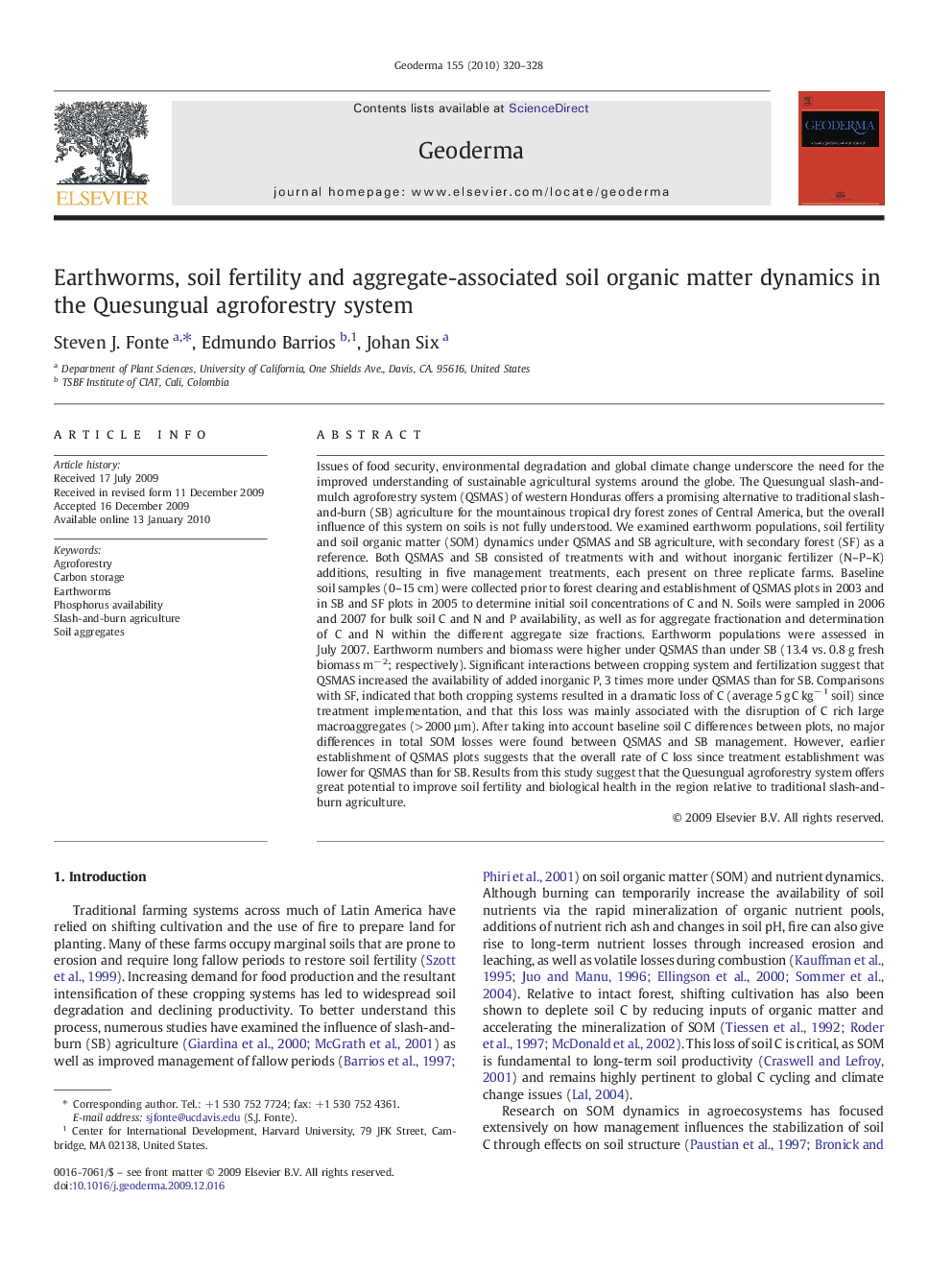| کد مقاله | کد نشریه | سال انتشار | مقاله انگلیسی | نسخه تمام متن |
|---|---|---|---|---|
| 4574688 | 1629523 | 2010 | 9 صفحه PDF | دانلود رایگان |

Issues of food security, environmental degradation and global climate change underscore the need for the improved understanding of sustainable agricultural systems around the globe. The Quesungual slash-and-mulch agroforestry system (QSMAS) of western Honduras offers a promising alternative to traditional slash-and-burn (SB) agriculture for the mountainous tropical dry forest zones of Central America, but the overall influence of this system on soils is not fully understood. We examined earthworm populations, soil fertility and soil organic matter (SOM) dynamics under QSMAS and SB agriculture, with secondary forest (SF) as a reference. Both QSMAS and SB consisted of treatments with and without inorganic fertilizer (N–P–K) additions, resulting in five management treatments, each present on three replicate farms. Baseline soil samples (0–15 cm) were collected prior to forest clearing and establishment of QSMAS plots in 2003 and in SB and SF plots in 2005 to determine initial soil concentrations of C and N. Soils were sampled in 2006 and 2007 for bulk soil C and N and P availability, as well as for aggregate fractionation and determination of C and N within the different aggregate size fractions. Earthworm populations were assessed in July 2007. Earthworm numbers and biomass were higher under QSMAS than under SB (13.4 vs. 0.8 g fresh biomass m− 2; respectively). Significant interactions between cropping system and fertilization suggest that QSMAS increased the availability of added inorganic P, 3 times more under QSMAS than for SB. Comparisons with SF, indicated that both cropping systems resulted in a dramatic loss of C (average 5 g C kg− 1 soil) since treatment implementation, and that this loss was mainly associated with the disruption of C rich large macroaggregates (> 2000 µm). After taking into account baseline soil C differences between plots, no major differences in total SOM losses were found between QSMAS and SB management. However, earlier establishment of QSMAS plots suggests that the overall rate of C loss since treatment establishment was lower for QSMAS than for SB. Results from this study suggest that the Quesungual agroforestry system offers great potential to improve soil fertility and biological health in the region relative to traditional slash-and-burn agriculture.
Journal: Geoderma - Volume 155, Issues 3–4, 15 March 2010, Pages 320–328